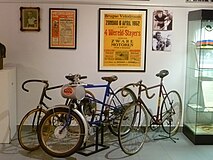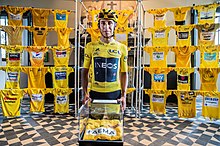
Édouard Louis Joseph, Baron Merckx is a Belgian former professional road and track bicycle racer who is the most successful rider in the history of competitive cycling. His victories include an unequalled eleven Grand Tours, all five Monuments, setting the hour record, three World Championships, every major one-day race other than Paris–Tours, and extensive victories on the track.

Roeselare is a Belgian city and municipality in the Flemish province of West Flanders. The municipality comprises the city of Roeselare proper and the towns of Beveren, Oekene and Rumbeke.

Alberic "Briek" Schotte was a Belgian professional road racing cyclist, one of the champions of the 1940s and 1950s. His stamina earned him the nickname "Iron Briek".

A sprinter is a road bicycle racer or track racer who can finish a race very explosively by accelerating quickly to a high speed, often using the slipstream of another cyclist or group of cyclists tactically to conserve energy.

Jean-Pierre "Jempi" Monseré was a Belgian road racing cyclist who died while champion of the world.
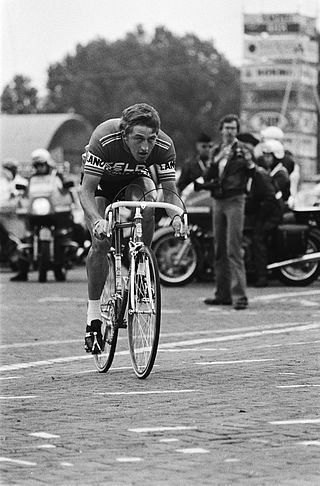
Freddy Maertens is a Belgian former professional racing cyclist who was twice world road race champion. His career coincided with the best years of another Belgian rider, Eddy Merckx, and supporters and reporters were split over who was better. Maertens' career swung between winning more than 50 races in a season to winning almost none and then back again. His life has been marked by debt and alcoholism. It took him more than two decades to pay a tax debt. At one point early in his career, between the 1976 Tour and 1977 Giro, Maertens won 28 out of 60 Grand Tour stages that he entered before abandoning the Giro due to injury on stage 8b. Eight Tour stage wins, thirteen Vuelta stage wins and seven Giro stage wins in less than one calendar year.
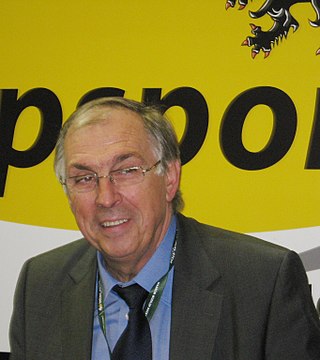
Patrick Sercu was a Belgian cyclist who was active on the road and track between 1961 and 1983. On track, he won the gold medal in the 1 km time trial at the 1964 Summer Olympics, as well as three world titles in the sprint in 1963, 1967 and 1969. On the road, he earned the green jersey in the 1974 Tour de France. Sercu is the record holder for the number of six-day track race victories, having won 88 events out of 223 starts between 1961 and 1983; several of these wins were with cycling great Eddy Merckx. He also won six stages at the Tour de France and eleven stages at the Giro d'Italia.
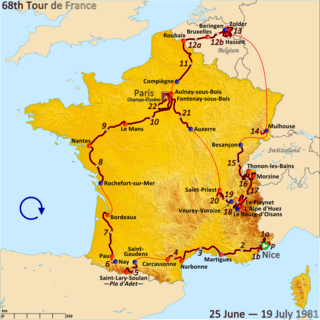
The 1981 Tour de France was the 68th edition of the Tour de France, taking place between 25 June and 19 July. The total race distance was 24 stages over 3,753 km (2,332 mi). It was dominated by Bernard Hinault, who led the race from the sixth stage on, increasing his lead almost every stage. Only Phil Anderson was able to stay close to him, until the 16th stage when he fell behind by about 7:00, and then on the 17th stage he would lose another 17 minutes. In the end only Lucien Van Impe, Robert Alban and Joop Zoetemelk were able to finish inside 20:00 of the now three time champ.
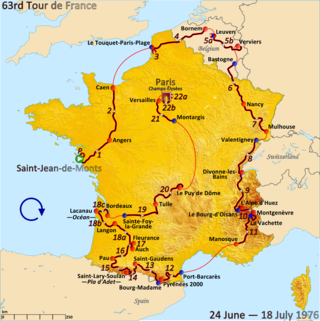
The 1976 Tour de France was the 63rd edition of the Tour de France, one of cycling's Grand Tours. It took between 24 June and 18 July, with 22 stages covering a distance of 4,017 km (2,496 mi). It was won by mountain specialist Lucien Van Impe in a battle with the previous winner Bernard Thévenet and Joop Zoetemelk. Zoetemelk won three high mountain stages including Alpe d'Huez and Puy-de-Dôme but this Tour became known for when the young directeur sportif of Van Impe, Cyrille Guimard, threatened to run Van Impe off the road with the Team Car if he didn't attack. Van Impe then attacked and won the Tour.

Roy Schuiten was a Dutch track and road racing cyclist. After retirement he became a team manager before starting a restaurant.
The 32nd Edition Vuelta a España, a long-distance bicycle stage race and one of the three grand tours, was held from 26 April to 15 May 1977. It consisted of 19 stages covering a total of 2,785 km (1,731 mi), and was won by Freddy Maertens of the Flandria cycling team. While Maertens dominated the race he won the General Classification by less than 3:00. The domination was from his record shattering 13 stages wins including the first and the last. He also won the points classification. Pedro Torres won the mountains classification.
Paul Wellens was a Belgian professional road bicycle racer.
Leo Wellens is a Belgian former cyclist. He competed in the team time trial event at the 1980 Summer Olympics. He is the brother of fellow racing cyclists Paul and Johan Wellens and the father of cyclist Tim Wellens. At the 1981 Tour de France, he and his brothers all rode for the Sunair–Sport 80–Colnago team as domestiques for Freddy Maertens.

The Men's Individual Road Race of the 1974 UCI Road World Championships cycling event took place on August 25 in Montreal, Quebec, Canada. The route consisted of twenty-one laps around a circuit that contained two climbs within it, totaling to a length of 262.5 km (163.1 mi). Belgian Eddy Merckx won the race, while French riders Raymond Poulidor and Mariano Martínez finished second and third, respectively. This was Merckx's third victory in the men's road race at the UCI Road World Championships, equaling the record. In addition, he also completed the Triple Crown of Cycling, which consists of winning two Grand Tour races and the men's road race at the UCI Road World Championships in a calendar year.

Dries De Bondt is a Belgian cyclist, who currently rides for UCI ProTeam Alpecin–Deceuninck.

Remco Evenepoel is a Belgian professional cyclist who currently rides for UCI WorldTeam Soudal–Quick-Step.

Emiel Vermeulen is a Belgian cyclist, who currently rides for UCI Continental team BEAT Cycling.
Johan Wellens is a Belgian former racing cyclist. He rode in the 1981 Tour de France. He is the brother of fellow racing cyclists Paul and Leo Wellens and the uncle of cyclist Tim Wellens. At the 1981 Tour, he and his brothers all rode for the Sunair–Sport 80–Colnago team as domestiques for Freddy Maertens.
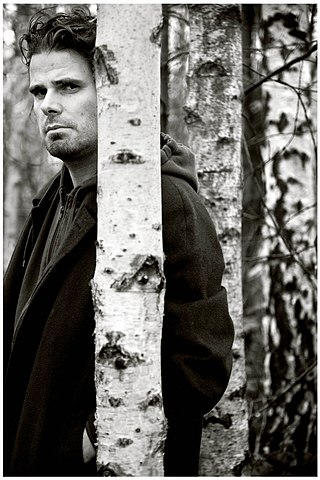
Stephan Vanfleteren is a Belgian photographer, best known for his portraits in black and white and his depictions of Belgium and abroad.


